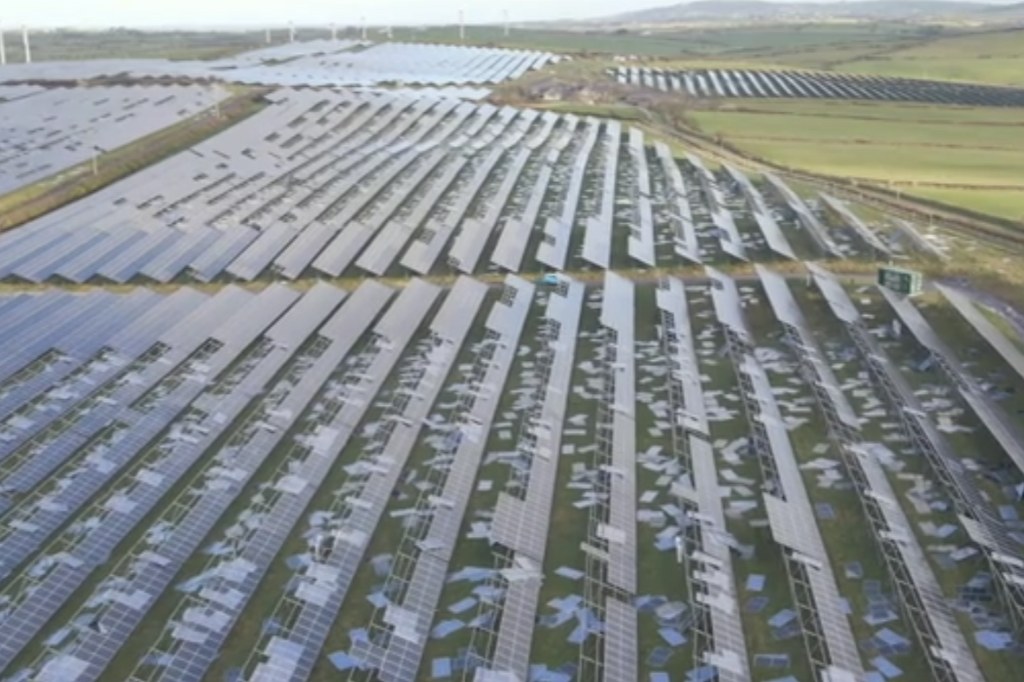
Solar Farm Damage: A Growing Concern
The Isle of Anglesey, a popular tourist destination in northwest Wales, has recently experienced significant damage to a newly commissioned solar farm due to Storm Darragh. The incident highlights the vulnerability of renewable energy infrastructure to extreme weather events. In this article, we’ll delve into the causes and consequences of solar farm damage, as well as potential solutions for mitigating such damage.
The Rise of Renewable Energy
Renewable energy sources have become an increasingly important part of our energy mix, with many countries investing heavily in wind and solar power. The benefits of renewable energy are clear: it’s a cleaner source of energy, produces no greenhouse gas emissions, and can help reduce our reliance on fossil fuels.
However, the growth of renewable energy comes with its own set of challenges. One of the biggest concerns is the vulnerability of renewable energy infrastructure to extreme weather events. Solar farms, in particular, are susceptible to damage from storms and other severe weather conditions.
Storm Darragh’s Fury
Storm Darragh was a powerful storm that swept across the UK last month, bringing with it strong winds and heavy rainfall. The storm caused significant damage to several solar farms across the country, including the one on the Isle of Anglesey.
The damage was widespread, with many of the solar panels being destroyed or damaged beyond repair. The exact cost of the damage is still unknown, but it’s estimated that the total bill could be millions of pounds.
Causes of Solar Farm Damage
So, what causes solar farm damage? There are several factors at play here. One of the main culprits is wind. Strong winds can cause the solar panels to flex or even break, leading to significant damage.
Another factor is rainfall. Heavy rainfall can also cause damage to solar farms, particularly if the water accumulates on the panels and causes them to short circuit.
Effects on the Environment
The impact of storm Darragh’s fury on the Isle of Anglesey’s solar farm has had a significant effect on the environment. The damaged solar panels will need to be replaced, which will result in a large amount of waste being generated.
Furthermore, the damage caused by the storm could have long-term consequences for the environment. If the solar farm is not repaired or replaced, it could lead to a loss of revenue for the owners and potentially even lead to the closure of the facility.
Mitigating Solar Farm Damage
So, what can be done to mitigate solar farm damage? There are several strategies that can be implemented to reduce the risk of damage from extreme weather events.
One approach is to use more robust materials in the construction of the solar panels. This could include using more durable plastics or metals that are less prone to damage from wind and rain.
Another strategy is to implement a maintenance program for the solar farm. This would involve regular inspections and maintenance tasks to ensure that the facility is running smoothly and efficiently.
Innovative Solutions
There are also several innovative solutions being developed to mitigate solar farm damage. One approach is to use floating solar panels, which can be installed on lakes or rivers rather than on land.
Another solution is to use solar panels with integrated weatherproofing systems, which can help to reduce the impact of wind and rain on the facility.
The Future of Renewable Energy
So, what does the future hold for renewable energy? Despite the challenges posed by solar farm damage, many experts believe that renewable energy will continue to play a major role in our energy mix.
In fact, according to the International Energy Agency (IEA), renewable energy could meet up to 80% of global electricity demand by 2050. This would require significant investment in new technologies and infrastructure, as well as a major shift in our attitudes towards energy production and consumption.
Strategies for Reducing Damage
So, what can be done to reduce the risk of damage from solar farm damage? There are several strategies that can be implemented to minimize the impact of extreme weather events on renewable energy infrastructure.
One approach is to use more robust materials in the construction of the solar panels. This could include using more durable plastics or metals that are less prone to damage from wind and rain.
Another strategy is to implement a maintenance program for the solar farm. This would involve regular inspections and maintenance tasks to ensure that the facility is running smoothly and efficiently.
Ways Forward
So, what’s next for renewable energy? Despite the challenges posed by solar farm damage, many experts believe that renewable energy will continue to play a major role in our energy mix.
In fact, according to the International Energy Agency (IEA), renewable energy could meet up to 80% of global electricity demand by 2050. This would require significant investment in new technologies and infrastructure, as well as a major shift in our attitudes towards energy production and consumption.
